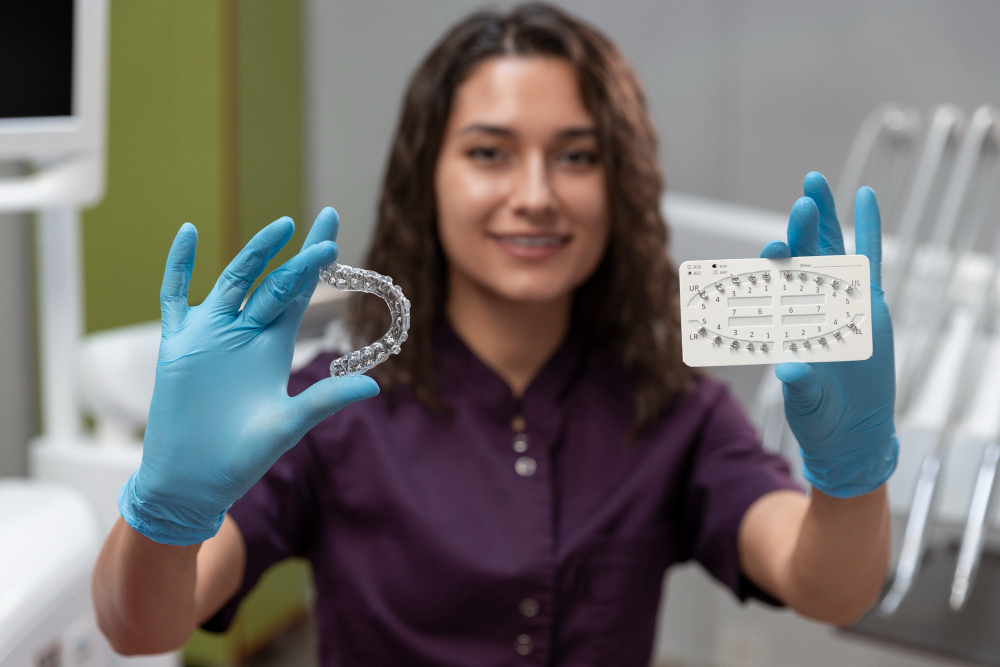Introduction
Invisaligners have changed the way people straighten their teeth. Unlike metal braces, Invisaligners are clear and almost invisible. Many people now choose Invisaligners for a comfortable and discreet way to improve their smile. In this guide, you will learn what Invisaligners are, how they work, and if they might be right for you.
What Are Invisaligners?
Invisaligners are clear, plastic trays that fit over your teeth. Dentists use them to straighten teeth without wires or brackets. Because they are custom-made, they fit your mouth perfectly. People often call them “clear aligners” or “invisible braces.” Invisaligners are popular with both teens and adults who want a less noticeable way to fix their teeth.
How Do Invisaligners Work?
First, your dentist takes a 3D scan of your teeth. Then, a series of clear aligners are made just for you. Each set of aligners moves your teeth a little bit at a time. Usually, you wear each set for about two weeks. After that, you switch to the next set. Over time, your teeth slowly move into the right position. Most people wear Invisaligners for 12 to 18 months, but this can vary.
Benefits of Invisaligners
Who Is a Good Candidate for Invisaligners?
Not everyone can use Invisaligners. However, they work well for many people. You may be a good candidate if you have:
On the other hand, people with severe bite issues or very complex dental problems may need other treatments. Your dentist will help you decide if Invisaligners are right for you.
Invisaligners vs. Traditional Braces
Both Invisaligners and traditional braces straighten teeth, but they are quite different. For example, Invisaligners are clear and removable, while braces use metal wires and brackets. Many people find Invisaligners more comfortable. However, traditional braces may work better for very complex cases. Your dentist can explain which option fits your needs best.
Step-by-Step Invisaligner Treatment Process
Care and Maintenance Tips
Taking care of your Invisaligners is easy, but it is important. For best results, follow these tips:
Potential Risks and Side Effects
Invisaligners are safe for most people. Still, there are some possible side effects. For instance, you may feel mild discomfort when switching to a new set. Some people notice slight changes in speech at first. Rarely, aligners can cause gum or tooth soreness. If you have any problems, contact your dentist right away. The American Dental Association notes that following your dentist’s advice helps lower risks.
Frequently Asked Questions About Invisaligners
Conclusion
Invisaligners offer a clear, comfortable way to straighten teeth. They are easy to use and fit many lifestyles. However, not everyone is a good candidate. For best results, always follow your dentist’s advice. If you are thinking about Invisaligners, consult a dental specialist to see if they are right for you.

